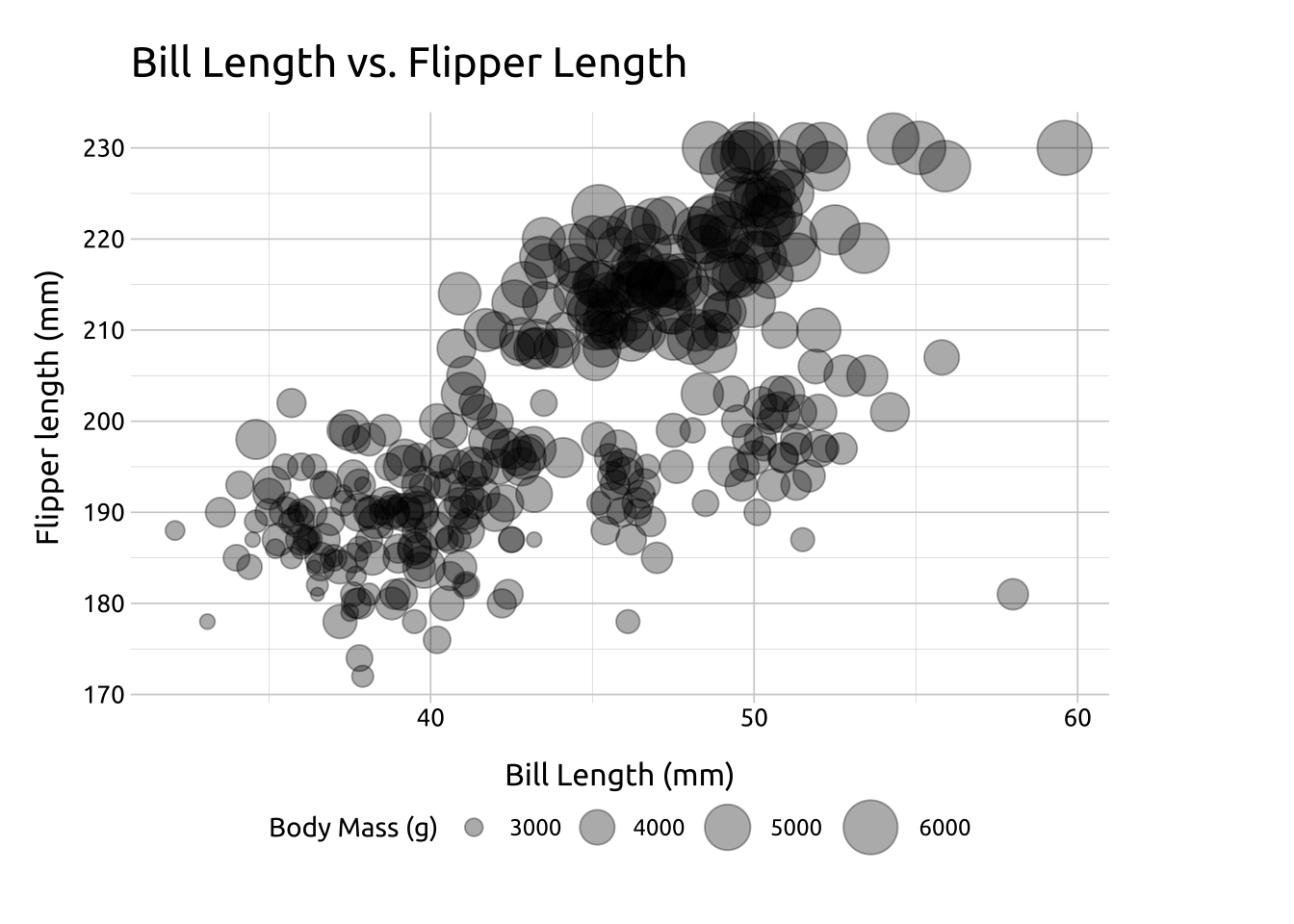
Bubble charts
Description
Bubble graphs display relationships between three numeric (continuous) variables.
The position on the x and y axis illustrates the relationship between the first two variables, and the size of the point (i.e., the bubble) conveys the numeric value of the third.
Getting set up
PACKAGES:
Install packages.
Code
install.packages("palmerpenguins")
library(palmerpenguins)
library(ggplot2)DATA:

The penguins data
Code
penguins <- palmerpenguins::penguins
glimpse(penguins)Rows: 344
Columns: 8
$ species <fct> Adelie, Adelie, Adelie, Adelie, Adelie, Adelie, Adel…
$ island <fct> Torgersen, Torgersen, Torgersen, Torgersen, Torgerse…
$ bill_length_mm <dbl> 39.1, 39.5, 40.3, NA, 36.7, 39.3, 38.9, 39.2, 34.1, …
$ bill_depth_mm <dbl> 18.7, 17.4, 18.0, NA, 19.3, 20.6, 17.8, 19.6, 18.1, …
$ flipper_length_mm <int> 181, 186, 195, NA, 193, 190, 181, 195, 193, 190, 186…
$ body_mass_g <int> 3750, 3800, 3250, NA, 3450, 3650, 3625, 4675, 3475, …
$ sex <fct> male, female, female, NA, female, male, female, male…
$ year <int> 2007, 2007, 2007, 2007, 2007, 2007, 2007, 2007, 2007…The grammar
CODE:
Create labels with labs()
Map bill_length_mm to x axis
Map flipper_length_mm to y axis
Map body_mass_g to size
Set alpha to 1/3
Add scale_size(), set the range to c(0.1, 10) and name to "Body Mass (g)"
Move the legend to the bottom of the graph with theme(legend.position = "bottom")
Code
labs_bubble <- labs(
title = "Bill Length vs. Flipper Length",
x = "Bill Length (mm)", y = "Flipper length (mm)",
size = "Body Mass (g)")
ggp2_bubble <- penguins |>
ggplot(
aes(x = bill_length_mm, y = flipper_length_mm)) +
geom_point(aes(size = body_mass_g), alpha = 1/3) +
scale_size(range = c(.1, 10),
name = "Body Mass (g)") +
theme(legend.position = "bottom")
ggp2_bubble +
labs_bubbleGRAPH:
